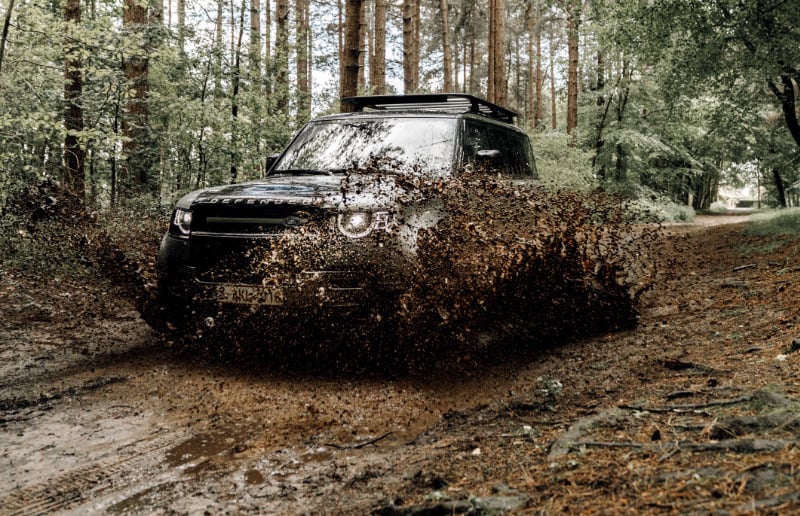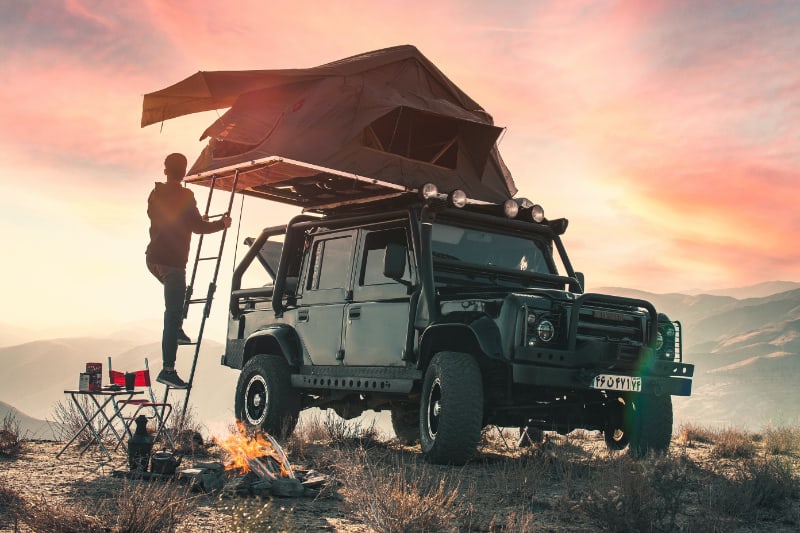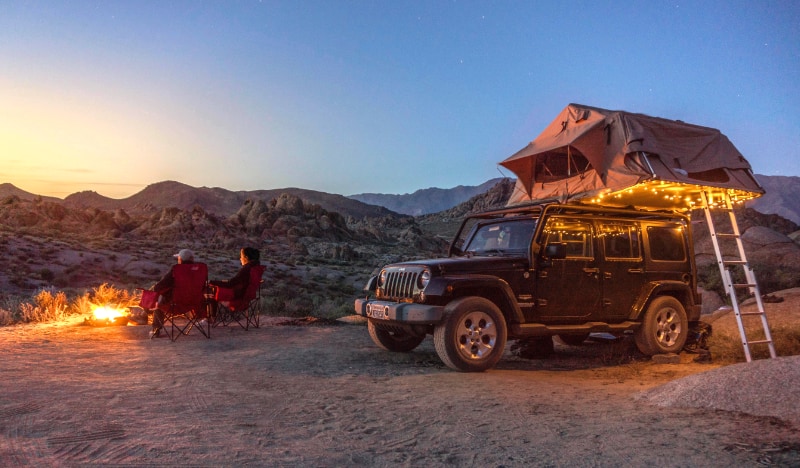With our BAREWAYS navigation system being developed for rural areas with bad roads as well, we take a closer look at the vehicles one thinks are necessary on unpaved roads and their different types of traveling habits. Two types stand out: Off-Roader and Overlander.
What are Overlanders and why is there a difference to Off-roaders? What vehicle requirements are there for the Off-roader or the Overlander and what are the preferences of the respective type?

The Off-roader
Finding and mastering difficult paths is the goal of an off-roader. It is not about the country’s cultural experience, but purely about the nature of the terrain. Mud, deep sand, and water are the elements where off-roaders feel most comfortable.
The spare parts box is full of quick-release axles and wheel bearings. Things that can be quickly repaired on-site to get the car back on the road.
When you are racing through the dunes of the Sahara, it makes more sense that a second vehicle is there to pull you out again if you have overestimated yourself. So another aspect for the off-roader is driving in groups. If your car is tipped over, it can be corrected faster with two vehicles than if you were traveling alone.
Generally, off-roaders behave respectfully towards nature. Because off-road doesn’t necessarily mean driving off road. Which sounds paradoxical, doesn’t it? It rather just means “Off the paved road” and leads you over slopes, wooden bridges, and back roads through the mud or on steep, washed-out, serpentine mountain passes. Real off-roading is accepted only in the desert. You can also drive off-road in Iceland, but you cannot wander off the beaten track.

The Overlander
The demands of an Overlander on the other hand are similar but not the same. A typical goal is to travel to distant parts of the world. Whether it’s a trip to Mongolia or India, a crossing of Africa, or an overland trip from Alaska to the tip of Tierra del Fuego. A trip to Spain can also bring some Overlanders all that they need, it mustn’t be a very far away journey.
All Overlanders have one thing in common and that is traveling overland. While the off-roader drives to Albania in two days to wallow in the mud for two weeks, it can be a journey of several weeks for an Overlander to get to Albania at all. As the saying goes, the route is the goal.
Overlanders call their vehicle their home, so the requirements to it are different from those pure off-road cars. On their journey, Overlanders however often encounter demanding off-road passages. Due to this, many Overlanders travel in 4×4 vehicles.
Typical vehicles for such tours are the Toyota Landcruiser HZJ, the Land Rover Defender, or 4×4 box vans such as a Mercedes Sprinter. It all depends on the traveler’s needs and budget.
A Mini with a roof tent or a fully packed Audi A3 with a floor tent, a Fiat 500 or a Beetle? No problem. The way counts and most of the ways can be driven with a perfectly ordinary vehicle. Locals will prove it to you.

Gadgets of an Overlander-Car range from a solar system, a decent sleeping option, to the water filter and you will often find decent coffee machines. Therefore, the overland vehicles often resemble a mobile home more than pure off-road vehicles.
Due to the fact that the Overlander is often outside the zone of their automobile club of choice (like ADAC in Germany), they also have to deal with all the technical problems that the car has on their own. Waiting times of several days to weeks for spare parts are not uncommon and therefore most Overlanders try to treat their vehicle with care. If there are two paths, one through the deep mud and the other two meters away on solid ground, many Overlanders will choose solid ground – unlike the Off-Roader. Overlanders are very often on their own, so getting stuck is much less fun than with an off-road group tour where the person behind can simply pull you out.



Recent Comments